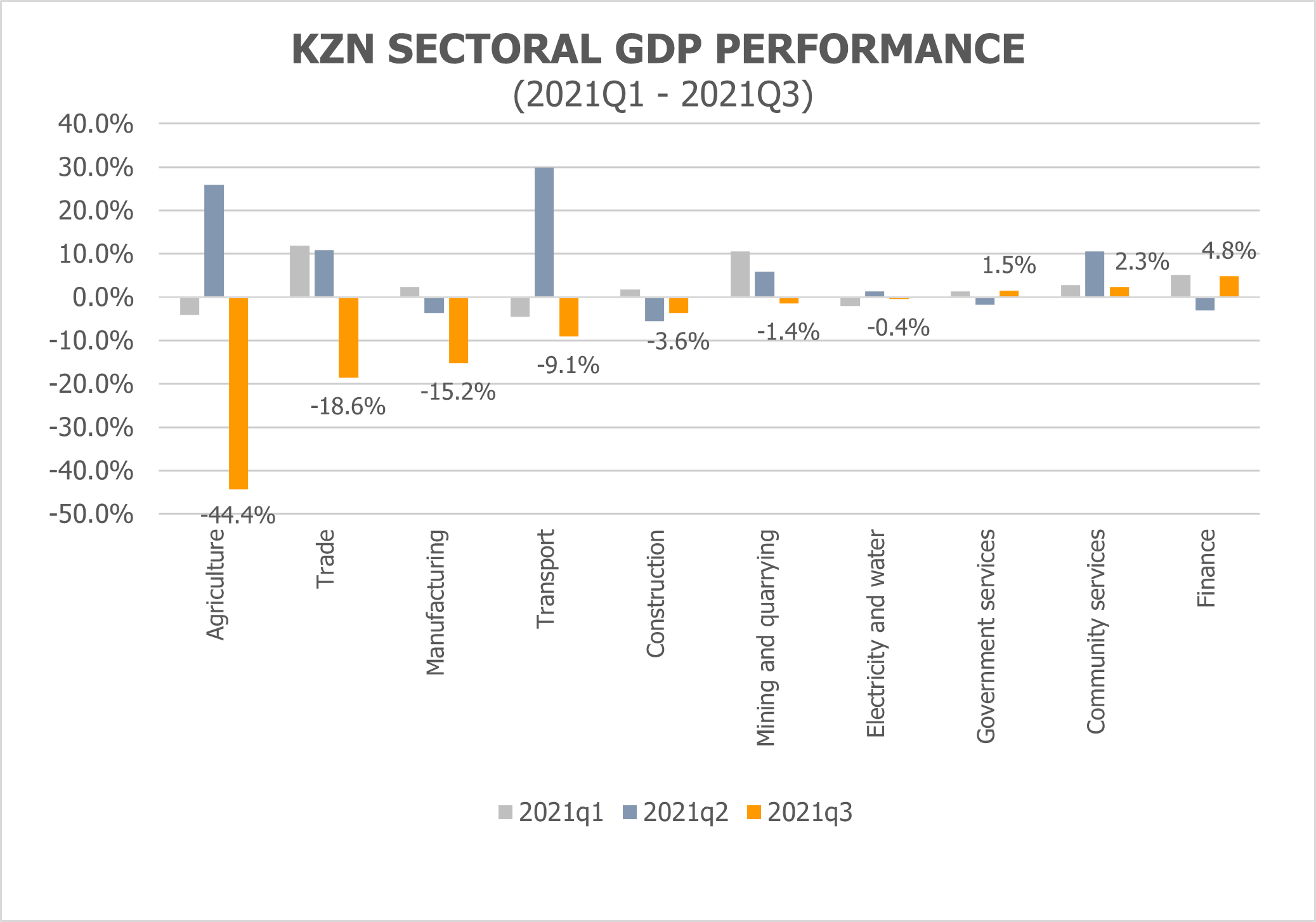
GDP CONTRACTS FOLLOWING FOUR QUARTERS OF POSITIVE GROWTH
While the country remains optimistic about recovering from the Covid-19 induced recession, South Africa’s economy continues to face challenges which have resulted in its contraction in 2021Q3. According to the Medium-Term Budget Policy Statement, National Treasury has since revised the country’s estimated growth of 5,1% for 2021 to 1.7% over the next 2 years. National GDP for 2021Q3 shrunk to -1,5% (unannualised) after four successive quarters of growth. This negative growth can be attributed to a number of factors. This data story discusses factors that contributed to GDP’s negative performance at both the provincial and local level.
DOWNTURN IN KZN GDP GROWTH

KZN GDP is estimated to have declined by 8,0% in quarter 3 of 2021. This comes after a bounce back in GDP growth in the past four quarters. The month of July was a challenging month for the economy; particularly KZN and Gauteng when the social unrest disrupted economic activities, and further dented investor confidence. While Durban’s data is not yet available, the composition of KZN’s GDP (60% of the province’s GDP is generated in Durban) mean that the province’s performance in turn provides insight on Durban’s performance.
SECTOR CONTRIBUTION TO NEGATIVE KZN GDP GROWTH

Seven sectors recorded negative growth during this period. The largest contributor to the negative growth was agriculture, followed by manufacturing, followed by the trade sector. Positive growth was seen in finance (4,8%), community services (2,3%), and general government services sector (1,5%). Therefore, had these three sectors not grown, the province’s economy may have shrunk by an even larger percentage
It comes as no surprise that sectors most hit by the unrest were trade and manufacturing, as retail activities were interrupted and not operational during this period. The transport sector also shrunk (-9,1%) as road freight transport into and out of KwaZulu-Natal were disrupted by the unrest.
As can be seen from the figure below, the manufacturing sector had already declined in quarter 2 of 2021. This decline is as a result of pre-existing socio-economic issues i.e. unstable electricity supply and Covid-19 lockdown restrictions.
CONCLUSION
While the economy has shown great resilience amid Covid-19 and was on its road to recovery, its performance has again been hampered. The pressure by the social unrest accompanied by pre-existing problems of unreliable electricity supply and Covid-19 lockdown restrictions has left the economy in distress this quarter. Government as well as social partners need to put the necessary measures in place to ensure sustainable economic growth that will overcome pre-existing structural, as well as ad-hoc economic pressures.